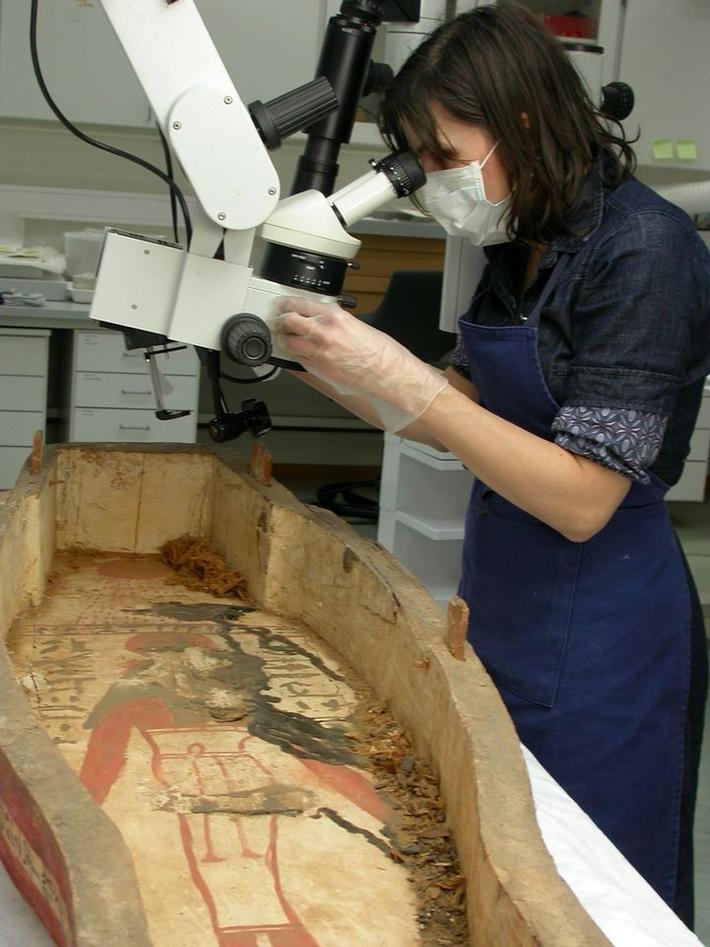Objects in for a check-up
Who eats museum objects? How are skins for collections prepared? How do we take care of paintings, Viking swords, Arabian coins, mammals, fossils, textiles, and the like? Enter the exciting world of conservation.
Main content
You can learn more about this on next Sunday. We will then let you into the secret of what goes on behind the exhibitions. Join us for the event «Objects in for a check-up».
TIME: Sunday 28 April between 12.00 and 15.00
LOCATION: University Museum, the Natural History Collections, Muséplass 3
Try your hand at conservation tasks
Lots of activities will go on – here are a few titbits:
- Try marbleizing: to imitate the appearance of marble.
- Take a look at a painting under UV light, what do you see?
- Squirrel preserved for eternity: How to treat and prepare a study skin of a small mammal for storage.
- Glue and fit the broken pieces of an object, terracotta pot or ceramics back together.
- Excavate an “object” from a plaster block.
- Dress like a conservator in a white suit, safety shoes, gloves and mask.
- Study pest insects under a microscope.
- View our exhibition of objects nearly eaten away.
- Vacuum-clean a reindeer skin, brush a fossil, and learn about different needle / thread / sowing techniques.
- How to make a blue print or cyanotype photo, an old photographic technique.
- Study fibres under a microscope and How to treat old textile fragments?
- Join us for a guided tour to the exciting Tower Room.
On the blog of The Great Collection Migration project, where culture-historical objects are being treated before relocation into new storage facilities, you can gain insight into the project and the work of the conservators.
The Museum’s hidden treasures
The majority of the Museum’s treasures are safely kept in the storage facilities, but merely a few per cent of the objects are ever put on display in the exhibitions. The University Museum has limited exhibition space and can only show a fraction of these large collections that have been assembled for nearly two hundred years. Another important reason is that objects and specimens have to be stored in a safe and proper way in order to be suitable for research purposes.
The conservators are the specialists who secure these treasures, make them available for research and dissemination by, among other things, measuring humidity, temperature, light, pollution, and to prevent attacks from pests and mould. Good storage conditions and secure storage areas are therefore of vital importance.

